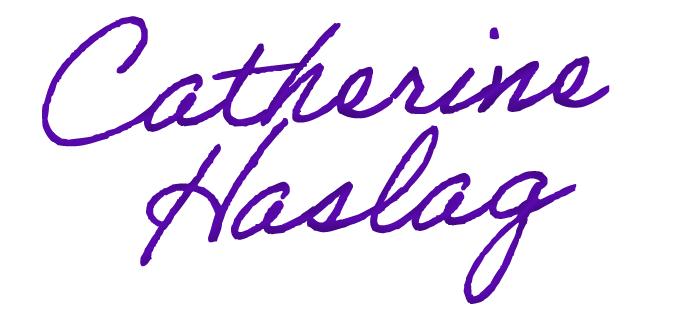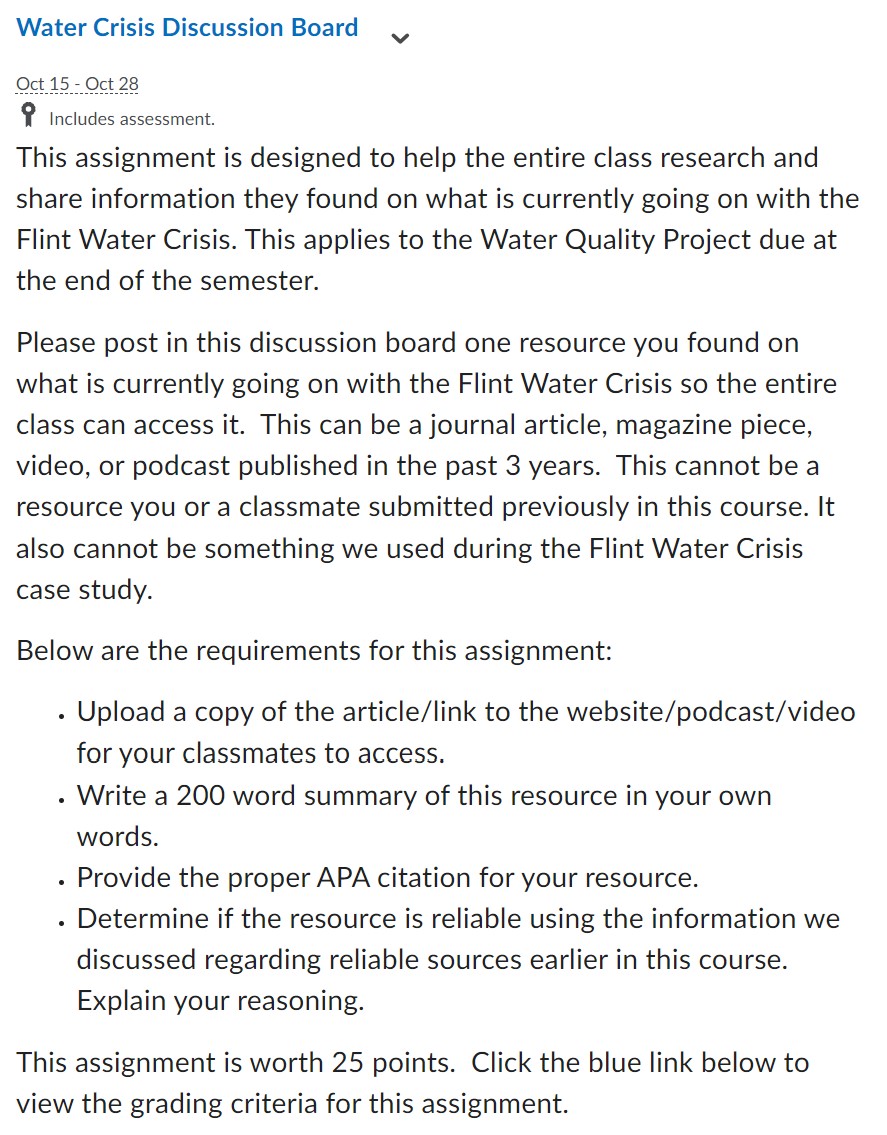After the water quality experiment, students report on their findings. Below is the format students follow when writing their report. This is provided to students, along with a rubric for the assignment.
Title Page
A separate and single page that provides the following information:
- The title of the experiment.
The title says what you did. It should be brief (aim for ten words or less) and describe the main point of the experiment or investigation. An example of a title is “Effects of Ultraviolet Light on Borax Crystal Growth Rate”. If you can, begin your title using a keyword rather than an article like ‘The’ or ‘A’.
- Your name
- The date the report was submitted.
- Please do not use any designs/graphs on your cover page. Only the information listed in a through c should be provided.
Introduction
The introduction explains the concept discussed in the lab. It should introduce the reader to the chemical concepts being applied in the laboratory. In other words, if the lab is about chemical changes, then the introduction should contain information about what a chemical change is and how to recognize one.
The introduction should also include a sentence stating the hypothesis (what you expected to happen during the experiment). In the introduction, you also want to outline any applicable EPA drinking water standards and the data from your local drinking water provider. You can do this using a data table. You will compare your results and your water quality report to the EPA standards.
The introduction needs to be in your own words. Do not copy the introduction from the experimental procedure and paste it into your report. If you do this, you will receive a zero for the report.
Experimental Procedure
List the equipment used and describe the steps you completed during your investigation. Write it as if you were giving directions for someone else to do the lab, and be detailed enough that anyone could read this section and duplicate your experiment. You may copy the experimental procedure directly from your laboratory manual if you would like, but all other sections of your report must be in your own words.
This section must be formatted the same as all of the other sections of your report. Do not scan or otherwise copy the results section and paste it into the report unless it can be formatted the same as the rest of the report.
Results Section
This section should include the numerical data obtained from your procedure, which can be presented as a table. Data encompasses what you recorded when you conducted the experiment. It’s just the facts, not any interpretation of what they mean. Your tables should be
- Be neatly organized, with all rows and columns appropriately labeled.
- Have a title and be numbered. For instance, the first table in your report should be numbered “Table 1,” etc.
- Briefly summarized in your report. DO NOT just provide a data table with your results. You also need to briefly talk about what your results were.
- Include information regarding the date and time your water sample was collected and what faucet it was taken from.
If you completed a table during the laboratory activity to document the data collected, this table must be included in the report. Be sure to title all tables and organize it (complete with labeling any columns or rows) to ensure the data can be easily read and understood. All tables should be formatted as described at the beginning of this document (Tahoma or Times New Roman 10pt). Tables must be inserted into your lab report in the appropriate section.
DO NOT INCLUDE A PHOTOGRAPH OF YOUR TABLE FROM THE EXPERIMENTAL PROCEDURE IN YOUR REPORT. These tables should be produced using a word processing program such as MSWord or Excel.
Discussion Section
This section discusses what your results mean and how they tie back to the chemical concept being discussed in the experiment.
- Compare your results and those obtained from your water quality report to the EPA standards for drinking water and determine if the water is safe to drink.
- Specifically state if the data collected is valid. Support your answer with evidence from the experiment/results.
- Research your local water provider. Did you find any evidence of violations or issues with your water provider in the past 5 years? If so, please provide information. If you didn’t identify any issues, state this.
- Identify sources of error for the experiment (i.e. mistakes you might have made while conducting the investigation or why the experiment didn’t work and what you could have done to improve the outcome.)
- Discuss if you use any water treatment filters or use a water softener in your home. If you do, this will impact your results and should be noted.
- Statement that hypothesis was accepted/rejected and why.
Conclusions
The conclusion is a single paragraph summarizing what happened in the experiment, whether your hypothesis was accepted or rejected, and what this means. This should act as a summary statement for your report.
References
If your research was based on someone else’s work or if you cited facts that require documentation, then you should list these references. The lab manual should ALWAYS appear in the references section and any other references used to write the report.
Cite the water quality report you obtained from your water provider. If the report was accessed online, be sure to include a link to the report. If it is not accessible online, please upload a copy of it with your lab report.
Cite the EPA water quality guidelines.
NOTE: If references have not been properly cited, this will be considered plagiarism and can result in a zero for the assignment.
You are expected to properly cite your sources in APA format. Information on how to cite sources in this format and additional information regarding plagiarism can be found at the Purdue Online Writing Lab (OWL) website.





